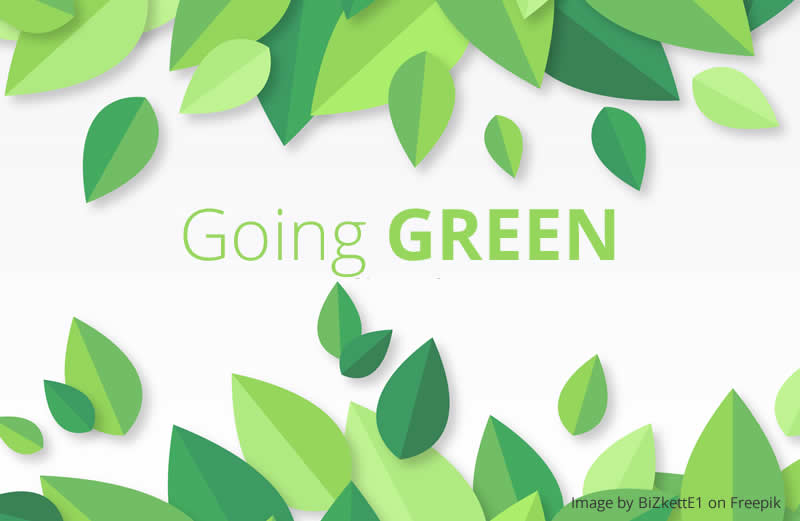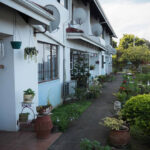7 steps to a greener future
We hardly dare to mention the words ‘load shedding’ – such is the current despair over the worsening energy crisis in South Africa. But one positive outcome of load shedding has been to make us acutely aware of the need to reduce our power usage and find alternate sources of clean energy. Which is good for the planet – making this top of our list of ‘green’ tips.
1. Cut down on power usage
Most of us have no idea how much power we use on a daily basis, or which appliances consume the most electricity. As a general rule, heating and cooling are the two main culprits. Heating includes the oven, tumble dryer and – number one – the geyser. In an average household of four people, the geyser accounts for around 40% to 60% of electricity usage.
Is it really necessary to keep 100-150 litres of water at a temperature of around 60 degrees all day long? We typically use most hot water for showering or bathing in the early morning or evening. Especially if there is no one home during the day, you can save a massive amount of electricity by turning the geyser off before you leave the house, and back on again in the evening – or installing a timer which does this automatically. A 150 litre geyser only needs about an hour to heat water from cold to the set temperature.
Durban summers are difficult to get through without air conditioning. But running the air conditioner at 16 degrees all night while you snuggle under a duvet is wasteful to say the least. Most air conditioners have energy saving programmes that cool the room to the desired temperature and then automatically switch off, and back on again when the temperature rises. Ditching the duvet in favour of a lightweight sheet, and installing insulation in your ceilings also reduces the need to run the air conditioner for long periods at low temperatures.
2. Go solar
In sunny South Africa, using solar energy to power our homes, offices and factories seems like a ‘no-brainer’ from both an economic and environmental perspective. Unfortunately, up-front costs make going ‘off grid’ impossible for the majority of home owners, and some kind of hybrid solar system is more common. For many, the installation of a solar geyser, or converting an existing geyser to solar power, is an affordable first step. At Tafta, we have begun with the installation of solar power at two buildings, and hope to roll out to all of them.
A complete hybrid system of solar plus inverter will set you back anything from R50 000 to R500 000 or more depending on your home and electricity usage. Although you’ll save on electricity in the future, going solar must be seen as long-term investment.
On a smaller scale, buying solar lights for your garden or patio is easy to do. DIY solar panels are also available at hardware stores like Makro and Builder’s. Although not suitable as a complete home power solution, provided you have the skills necessary to install them, they can be useful for minor installations, e.g. providing light for a shed or outbuilding.
3. Refuse, reduce, reuse, recycle
Most of us buy far too many things, most of which we don’t really need and may never use. When was the last time you bought some or other ‘bargain’ gadget simply because it popped up in your mailbox? Or browsed the online stores because you were bored? This mindless consumerism has been the norm for decades. But every time you buy something you don’t need, you waste precious resources like electricity, water and raw materials that were used to produce it.
Make a determined effort to buy less and use less. Embrace the minimalistic way of life rather than accumulating more and more ‘stuff’. Every time you buy a new pair of shoes or clothing, remove an older item from your cupboard and donate it to a charity shop or homeless person. If old clothes are completely past it, cut them up and use them as cleaning rags.
Embrace the idea of buying good quality second hand clothes from one of the many new thrift shops that have opened up. Browse the second-hand furniture shops for solid, timeless items like tables and cupboards instead of buying new flat pack furniture that won’t last.
Refuse plastic straws in restaurants and extra plastic wrappings on fresh produce and at the supermarket till. Rinse out margarine, ice cream and yogurt tubs and use them for storing leftovers, sandwiches and fruit – or as freezer containers – rather than buying ziplock or freezer bags. Instead of disposable bathroom wipes and paper towels use washable cleaning cloths and real towels. At work, remove paperclips from old documents and use them again.
As a last resort, recycle anything that can’t be reused.
4. Save paper
Did you know that it takes approximately 20 trees to produce a single tonne of paper? By changing a few habits, you can create a more sustainable, planet-friendly lifestyle. If you must print something out, adjust the original font size a point or two smaller and set the margins to narrow so you use fewer pages. Print on both sides of the paper, or use the back of old, non-confidential documents as scrap paper. Be sure to remove old paper clips so you can use them again.
Use real crockery instead of paper plates and cups. Old magazines will be appreciated at places with a waiting room, e.g. dentists, doctors and clinics. Or donate them to a nursing home, retirement village or pre-school. Find out if your local animal shelter can use your old newspapers as bedding. Reuse gift bags or wrap gifts in cloth, Japanese style.
5. Eat less meat
Raising cattle, sheep, pigs and poultry for human consumption strains water resources, increases soil erosion on land cleared for grazing, and produces dangerous levels of methane gas, which plays a major role in global warming. While you might not be ready to embrace an entirely plant-based diet, every meat free meal you consume helps reduce the impact on the environment.
6. Plant a tree
Trees play a crucial role in absorbing carbon dioxide and slowing global warming – and our planet needs an estimated trillion more trees to offset greenhouse gases. So, every tree you can plant makes a difference! At Tafta, we chose to celebrate our 65th anniversary by planting a tree at each of our homes on 14 February.
Choose hardy, water-wise indigenous trees, suitable for our climate and conditions. If you don’t have space, approach a local school or get permission to plant a tree in your neighbourhood park or green space.
Or plant a smaller shrub in a pot on your balcony. Spekboom, also known as the oxygen plant, is an indigenous succulent that is easy to grow, and can absorb between four to ten tonnes of carbon per hectare. Just think what your little plant can do for the air you breathe! Plus, you can even eat the leaves, or add them to a salad.
7. Grow your own herbs and vegetables
Even if you don’t have space for a vegetable garden, you can grow herbs and tomato plants in a window box or containers on your balcony. Instead of buying wildly expensive herbs from the supermarket, you’ll be able to pick fresh basil, parsley or rocket from your own garden.
Expand your gardening project by making your own compost from kitchen waste. Used tea bags, coffee grounds, vegetable peelings and eggshells can be turned into nutrient rich compost in your yard. Or use a kitchen countertop compost bin.
Going ‘green’ and caring for the environment is something we all need to adopt. Remember, there is no Planet B. It’s up to you and I to safeguard the Earth for future generations not yet born. Please share your own green tips in the comment section below.






 Affordable accommodation for life
Affordable accommodation for life Stay safe online – learn to recognise these common scams
Stay safe online – learn to recognise these common scams Community support for Mandela Day was inspiring
Community support for Mandela Day was inspiring Tafta proud to be placed in the Top 3 for the KZN Top Brand Awards
Tafta proud to be placed in the Top 3 for the KZN Top Brand Awards Puzzling it out – brain-boosting fun for older adults
Puzzling it out – brain-boosting fun for older adults Tafta Council member awarded MBE
Tafta Council member awarded MBE Concern and confusion over SASSA Old Age Grant payments
Concern and confusion over SASSA Old Age Grant payments Communication through the ages – we’ve come a long way!
Communication through the ages – we’ve come a long way! Vote for us in the KZN Top Brand Award
Vote for us in the KZN Top Brand Award Men’s health – signs older men shouldn’t ignore
Men’s health – signs older men shouldn’t ignore